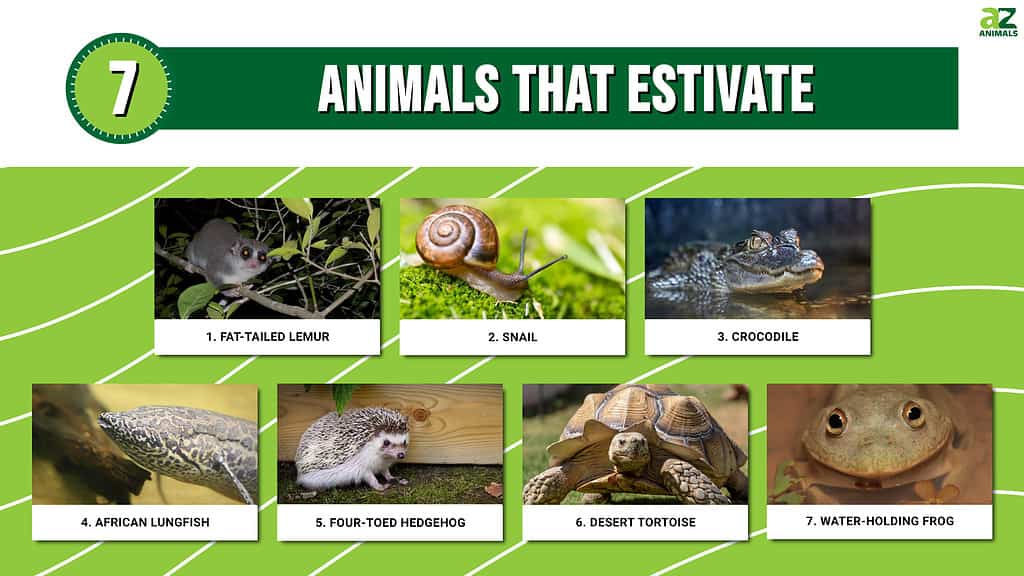
It’s common knowledge that creatures like bears and squirrels hibernate — a state where the creature goes dormant during the lean months of winter to conserve their water and body fat. But less known is the process of estivation.
Like hibernation, estivation refers to a dormant state where the animal’s metabolism is reduced. But estivation happens during hot and dry periods of the year rather than cold seasons. Animals that hibernate enter a deep sleep state, but estivating animals can awaken far quicker. Here are 7 animals that estivate.
#7: The Water-Holding Frog — A Source of Outback Refreshment

The water-holding frog buries itself underground to stay wet.
©Ken Griffiths/Shutterstock.com
The heat and arid wind of the Southern Australian desert means that staying hydrated can be the difference between life and death for the creatures that call it home. The water-holding frog has stumbled upon a unique method for staying wet even in the hottest hours of the day. When the climate becomes too insufferable, the water-holding frog will bury itself deep underground and secretes mucus that hardens into a protective carapace.
This protective armor also holds in a great deal of water, preventing dehydration as the frog sinks into its state of daytime torpor. The frog will then emerge when rainfall arrives and brings with it abundance.
But Australia’s Aboriginal people have developed their methods for dealing with the dryness and the heat of their home. Rather than wait for the frogs to emerge, they’ll dig up the frogs and then give them a gentle squeeze to let out fresh water. In most instances, it’s an exchange that mildly inconveniences rather than seriously hurts the frog, and the water produced is clear and clean.
#6: Desert Tortoise — Irrigating the Mojave Sands

The desert
tortoise
estivates in the summer and hibernates in the winter.
©iStock.com/GoDogPhoto
The Mojave Desert can be a relentlessly dry and hellishly hot place, but the slow and enormous desert tortoise has managed to thrive both thanks to its unique physiology and its clever approach to staying hydrated.
These tortoises both estivate in the summer and hibernate in the winter, and they do so by creating burrows that keep them sheltered while also placing them in conditions where the temperature isn’t quite so bad. Once it’s time to go under, they’ll cover up their den with dirt while they settle in for the long haul.
Fortunately, they can carry quite a large amount of water with them into their burrows. A desert tortoise can store up to 40% of its body weight in water within its bladder, and their low activity levels allow them to survive on very little food even when they aren’t hibernating or estivating. But these tortoises know how to plan for the future as well.
In addition to practicing these cycles of deep sleep, desert tortoises use their strangely shaped legs to dig pits in the sand. After rainfall, they’ll journey to these holes to drink the water that’s filled them.
The Desert Tortoise is brown with yellow, females can give birth for up to 15 years after initially mating with a male. Desert tortoises are very inactive most of the year. They spend a lot of their life underground or in rock shelters. This allows them to regulate body temperature and reduce water loss.
#5: Four-Toed Hedgehog — A Suspected Estivator
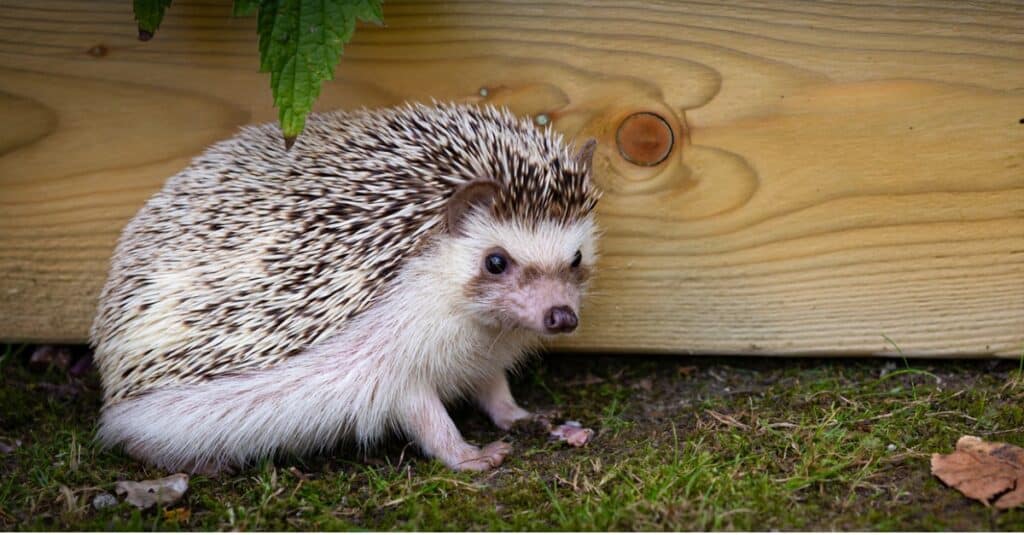
Lack of food is the force behind the four-toed hedgehog estivating.
©HildaWeges/Shutterstock.com
You can add Africa’s four-toed hedgehog to the small list of mammals that are known to estivate. These cute and spiny creatures have become alarmingly popular in the black market pet trade and are poached for their quills — which are believed to be good luck charms. These hedgehogs also hibernate in colder conditions, but their reason for estivating is a little different than the average animal. Scientists believe that it’s not the temperature that causes these hedgehogs to go into torpor but rather the lack of available food during the most sweltering days of the summer.
It’s believed that the estivation process is similar to that of the fat-tailed lemur — with the hedgehog normally going under for only a few weeks at a time and cycling into rates of higher metabolism and REM sleep. There’s a large population of four-toed hedgehogs that have been domesticated, but the fact that they don’t typically hibernate or estivate in captive conditions makes it more difficult for researchers to figure out the specifics of their sleep patterns in the wild.
#4: African Lungfish — Hiding in the Mud
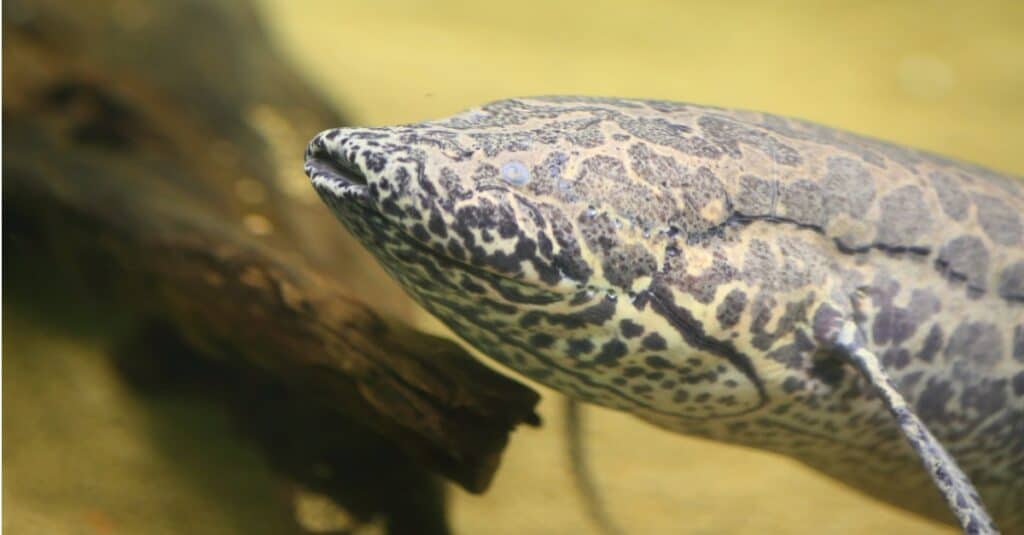
The African lungfish excretes a thick mucus that holds water and protects them from the outside world.
©iStock.com/feathercollector
The lungfish has existed for 400 million years with little changes to its overall physiology, so it only seems fair to allow it some sleep now and again. The ability to estivate — along with their titular lung — is at the heart of their long-term survival. It’s also a rare fish that can travel across both water and land. Functionally, this is similar to the process undergone by the water-holding frog. It will excrete a thick mucus that holds in the water while also offering it protection from the outside world. But all of this wouldn’t be possible without the development of some behavioral evolution early on.
These fish may have primitive minds, but they know well enough to burrow into the mud before beginning to estivate. Deep in the mud, these fish are unlikely to be discovered by predators and can survive the unbearable heat underneath layers of moist soil. As with many animals that hibernate, the lungfish will spend this period consuming its muscle mass for nourishment.
#3: Crocodile — Den-Dwelling Estivators
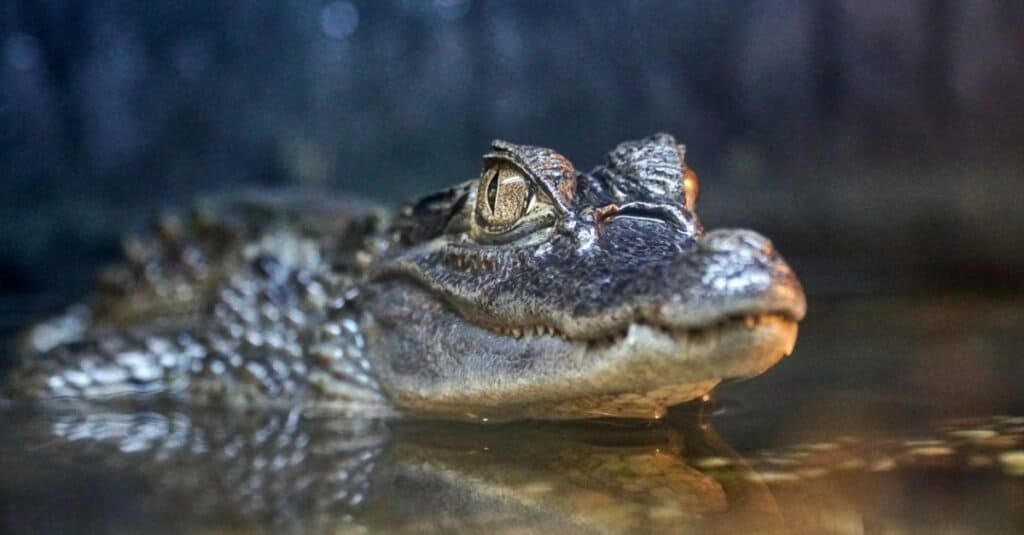
Some crocodiles retreat underground for three to four months at a time.
©iStock.com/Vladimir Bolokh
Crocodiles are cold-blooded animals, which means they tend to thrive in hot environments. But in regions like Iran, Pakistan, and India — where the unique mugger crocodile can be found — conditions are sometimes too hot. Mugger crocodiles tunnel into the ground creating burrows that regulate the temperature during the coldest and hottest months, and they’ll typically spend their days burrowed and venture out to hunt at night.
But during the hottest and driest periods of the month, they will hunker down in their dens and sink into a torpor state until they wait for the rainfall to return. Fortunately, they’re better adapted than most crocodiles for survival on — or in this case underneath — land.
They aren’t the only crocodiles that estivate either. A six-year study of crocodiles in northern Australia revealed that these creatures will retreat underground for three to four months at a time with access to little or no water. Although crocodiles don’t seem to have adopted any particular evolutionary tools for storing water internally for these estivation periods, there are at least ten recognized species of crocodiles that are known to estivate.
#2: Snail — Locking Themselves in the House
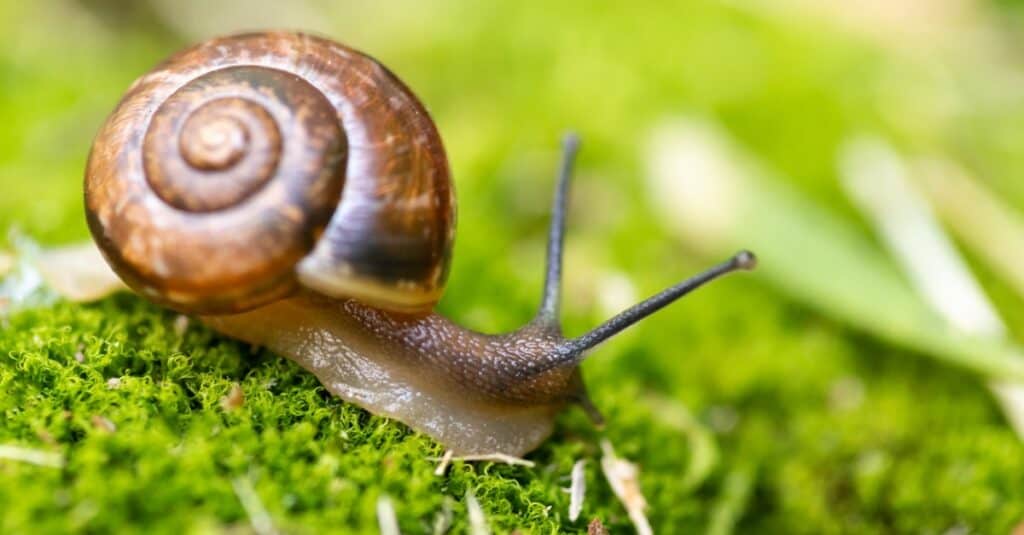
Snails are able to retreat into their shells for protection while estivating.
©iStock.com/BushAlex
While many creatures retreat into dens or bury themselves underground for protection during the estivation process, snails are an estivating animal that’s fortunate to already have a hiding place strapped to their backs. That’s a good thing because wet environments are a necessity for these little critters.
Moisture helps keep the snail from drying out, but it’s also a necessity for making sure that they can ingest a healthy level of oxygen through their breathing hole. A snail without moisture will simply shrivel up and die, but they’ve fortunately developed techniques to help them survive particularly arid conditions.
Through the creation of an epiphragm — a disc created from secreted mucus — the snail can seal up the holes in their shell, essentially locking itself in their home. Snails will often ascend to branches and other higher ground to avoid heat and predators before entering this state of estivation, and it does a very effective job at circulating moisture through the shell without letting anything escape.
The average snail will sleep for days at a time, but that’s just a fraction of what they’re capable of. Some snails may enter torpor for as long as three years if the conditions warrant it.
#1: Fat-Tailed Lemur — The World’s First Estivating Mammal

Fat-tailed lemurs often stay dormant for up to seven months at a time.
©Frank Vassen from Brussels, Belgium / CC BY 2.0 – License
The fat tail of this lemur serves an important purpose — keeping it nourished during its incredibly long phases of dormant rest. Since these primates often stay dormant for periods lasting up to seven months, they’re technically creatures that both hibernate and estivate. In the period leading up to their estivation, these lemurs will stuff themselves on as much food as possible.
Flowers and fruit are readily available, and a disproportionate amount of the fat that they develop will be stored in the tail. Before going into estivation, the tail can constitute nearly half of this primate’s body weight.
This breed of lemur was the first discovered mammal that estivates, and it’s produced some fascinating insight into the unique slumber cycles of these animals. They retreat into tree logs to estivate and naturally adjust their body temperature to match the conditions around them. But they don’t remain at room temperature for the entire time they’re sleeping.
In their stage of torpor, the heart rate of these lemurs can drop as low as eight beats per minute. But every week or two, they rise into a state known as interbout arousals that allow their body to heat back up to a manageable level. While this is happening, the fat-tailed lemur begins to experience REM sleep.
Summary of 7 Animals That Estivate
Here’s a recap of the animals which estivate that we took a close look at:
| Rank | Animal |
|---|---|
| 1 | Fat-Tailed Lemur |
| 2 | Snail |
| 3 | Crocodile |
| 4. | African Lungfish |
| 5 | Four-Toed Hedgehog |
| 6 | Desert Tortoise |
| 7 | Water-Holding Frog |
The photo featured at the top of this post is © iStock.com/Gogiya
Thank you for reading! Have some feedback for us? Contact the AZ Animals editorial team.






